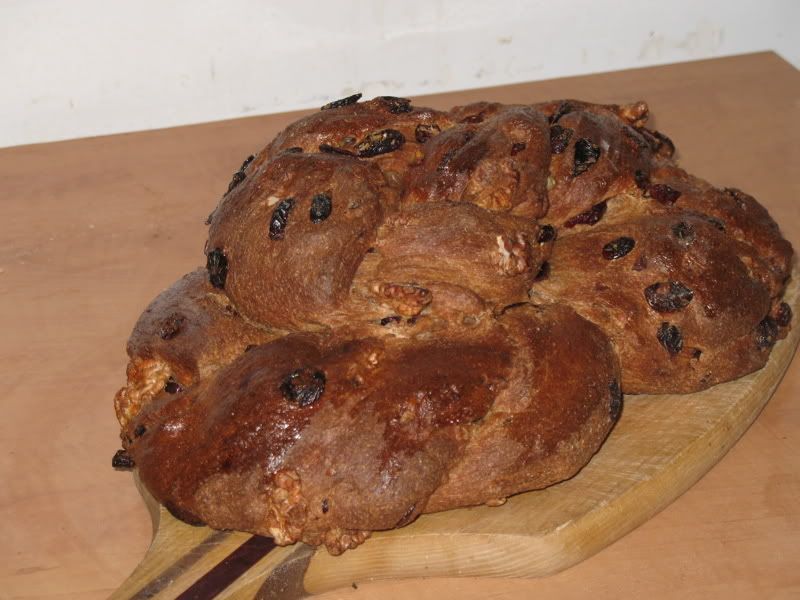Holiday bread!
This week, one of my colleagues volunteered our team at work to host the monthly Happy Hour. Thanks, bud. Anyway, it was a Thanksgiving theme and since I'm "The Bread Guy," they wanted me to bake something. I thought it would be a good excuse to convert the Bread Baker's Apprentice's Cranberry Walnut Celebration Loaf into whole wheat. So I did. Here's how it turned out:



 The two loaves of whole-wheat with the multi-grain loaf in the center.
The two loaves of whole-wheat with the multi-grain loaf in the center.